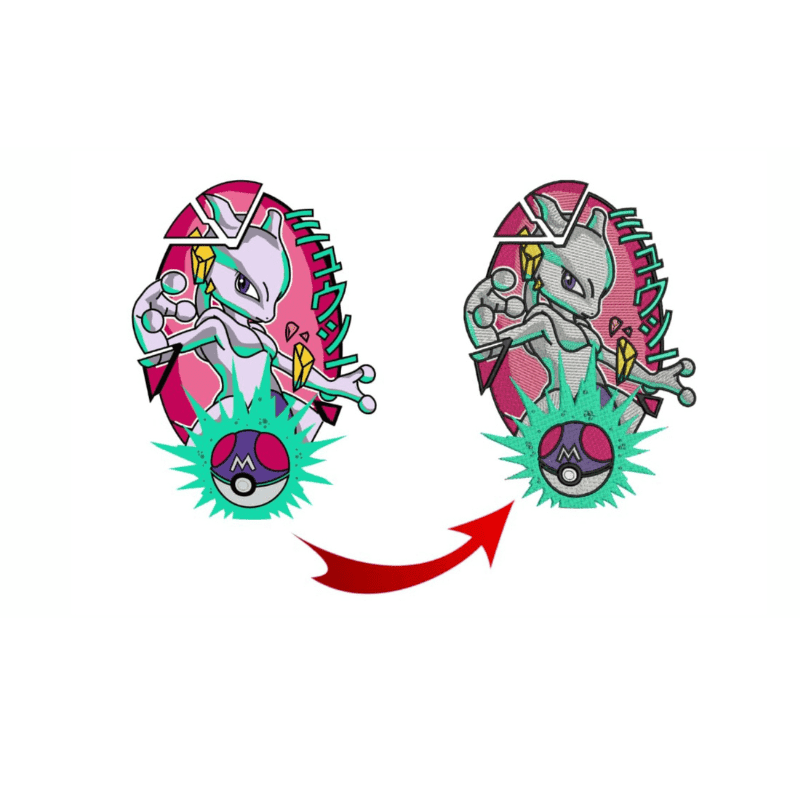Streamlining the Art of Needlework Digitizing: Step-by-Step Overview
As innovation proceeds to breakthrough, the digitization procedure has actually ended up being extra obtainable, allowing lovers to bring their detailed designs to life with convenience. In this overview, we will unwind the intricacies of embroidery digitizing, breaking down each action methodically to improve the procedure and empower both newbies and skilled embroiderers alike.
Comprehending Needlework Digitizing Software Application
Needlework digitizing software application functions as a vital device for transforming intricate styles right into digital styles compatible with needlework devices, promoting specific sewing and modification. This specialized software enables customers to import different picture documents layouts, such as JPG or PNG, and transform them into embroidery machine-readable styles like DST, EXP, or PES - Digitizing for Embroidery. By making use of features like stitch editing and enhancing, underlay options, and string color selection, digitizing software program enables users to control every facet of the layout process
Additionally, advanced needlework digitizing software offers devices for developing intricate layouts, changing stitch thickness, and integrating elaborate information. Individuals can likewise preview the design before stitching it out, guaranteeing accuracy and decreasing mistakes. Furthermore, numerous software application offer automated attributes that help streamline the digitizing process, conserving effort and time.
Comprehending the capabilities of needlework digitizing software is important for achieving top notch cause needlework jobs. By understanding this tool, needlework enthusiasts and specialists can release their creative thinking and bring elaborate layouts to life with precision and effectiveness.

Picking the Right Style File
After familiarizing yourself with the capacities of embroidery digitizing software, the next essential action in the procedure is picking the best style declare your task. Digitizing for Embroidery. When choosing a style declare needlework digitizing, it's vital to consider the complexity of the layout, the size of the end product, and the sort of material you will be collaborating with
For elaborate styles with fine details, a high-resolution image or vector data is recommended to ensure that the needlework maker can properly duplicate the design. Furthermore, the dimension of the end product plays a substantial duty in selecting the appropriate design file. Bigger layouts might call for higher resolution data to keep clarity and sharpness.
Moreover, the kind of material you will be stitching on affects the choice of style documents. Various fabrics might need adjustments in the layout data to make certain that the stitches are effectively aligned and the style looks like intended. By very carefully selecting the right style documents based on these factors, you can establish yourself up for an effective embroidery digitizing process.
Digitizing Devices and Strategies
Using specialized software application and accuracy methods, digitizing tools are crucial in changing intricate designs into embroidery-ready files. Needlework digitizing software application, such as Wilcom, Hatch, or Embrilliance, gives the essential platform to convert artwork right into stitch data. These programs provide functions like stitch modifying, underlay choices, and lettering devices to make certain the layout equates effortlessly onto fabric.
Among the crucial methods in digitizing is producing a clear course for the needlework equipment to follow. This involves digitizing each aspect of the see this page style with precision, identifying stitch types, densities, and instructions. By utilizing devices like digitizing tablets or software-specific plugins, embroiderers can attain a high degree of precision in their digitized styles.
Additionally, understanding the art of rug sewing is essential for producing quality embroidery. Underlay sewing stabilizes the textile and develops a structure for the layout, guaranteeing that the last item is both visually appealing and resilient. By understanding these digitizing devices and strategies, embroiderers can elevate their craft and bring detailed designs to life with accuracy and effectiveness.
Tailoring Stitch Types and Directions
Having developed a structure in digitizing devices and techniques, an essential aspect beforehand embroidery workmanship hinges on tailoring stitch kinds and directions with accuracy and purpose. The option of stitch types can considerably affect the overall appearance and structure of navigate to this site the embroidered design. Satin stitches, recognized for their smooth and shiny surface, job well for creating borders and message. On the various other hand, fill stitches are perfect for covering bigger locations efficiently. By purposefully integrating these stitch types, embroiderers can achieve deepness and dimension in their styles.
In addition, the instructions of stitches plays a crucial duty in improving the visual appeal of the final embroidery. Diverse stitch instructions can add appearance, emphasize specific elements, and create visual passion. As an example, altering the angle of stitches can replicate movement or natural patterns like fur or feathers. By trying out with different stitch angles and patterns, embroiderers can bring their designs to life with remarkable information and ins and out. Grasping the art of tailoring stitch types and instructions equips embroiderers to release their imagination and elevate the quality of their work.
Screening and Refining Your Digitized Layout
To ensure the accuracy and top quality of your digitized style, comprehensive screening and improvement are vital actions in the embroidery digitizing process. When you have completed the digitization of your layout, it is crucial to examine it before waging the real needlework. Testing enables you to recognize any kind of prospective issues such as thread breaks, stitch density issues, or layout distortions that might influence the result.

After screening, it is important to improve your digitized layout based on the feedback from the examination sew-out. This may include tweaking stitch setups, changing thickness, or making changes to the general design to accomplish the wanted published here result. By iterating with testing and improvement, you can adjust your digitized layout to perfection before relocating forward with the actual needlework process.
Conclusion
In verdict, understanding the art of embroidery digitizing calls for a thorough understanding of the software application, selecting the best design data, making use of digitizing tools and methods, customizing stitch types and directions, and screening and improving the digitized style. By following these actions, embroiderers can simplify the digitizing procedure and produce high-quality embroidered designs with accuracy and efficiency.